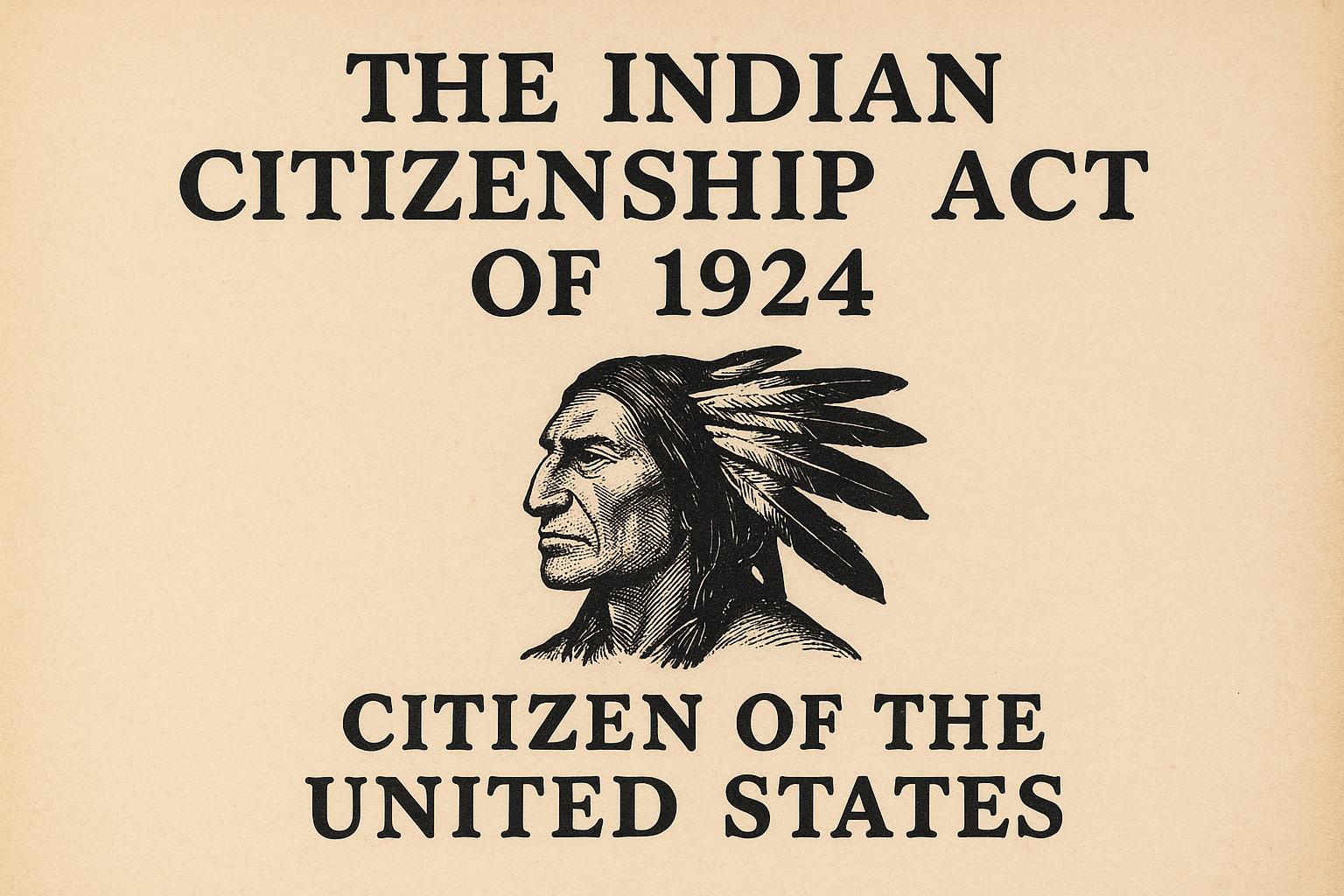Background of the Indian Citizenship Act of 1924
The Indian Citizenship Act of 1924, manifesting a significant legislative advancement, granted U.S. citizenship to Native Americans. Prior to its enactment, the path to U.S. citizenship for Native Americans was fraught with ambiguity and inconsistencies. Citizenship was frequently allocated on an individual basis via treaties or other legal methods, resulting in a lack of a uniform system governing their citizenship status.
Reasons Leading to the Act
Multiple elements influenced the creation and imperative sense of the Indian Citizenship Act. The backdrop of World War I was particularly influential in spurring the passing of the legislation. Native Americans enlisted and served in significant numbers during the war, underlining a stark contradiction: these individuals were fighting for a nation that did not extend to them the full rights of citizenship. Their readiness to serve highlighted the inequities they faced and increased the pressure on policymakers to rectify their legal status.
Parallelly, the Progressive Era, characterized by a push for social reforms, played a critical role in this legislation’s advent. This period saw initiatives aimed at enhancing democratic participation and integrating various ethnocultural groups into the American society. The Indian Citizenship Act was one such initiative to satisfy this broader vision of inclusivity and egalitarianism.
Major Provisions of the Act
The Indian Citizenship Act was designed with simplicity and clarity at its core. Primarily, it bestowed U.S. citizenship upon all non-citizen Native Americans born within the geographical boundaries of the United States. This legislative action was intended to alleviate the prevailing ambiguity ravaging the citizenship status of the Native American population.
Crucially, the act did not diminish or interfere with the sovereignty and treaty rights of Native American tribes. While conferring individual citizenship, the legislation maintained the existing rights, privileges, and immunities granted under prior agreements between various tribes and the U.S. government. Consequently, it recognized the importance of tribal sovereignty while extending individual citizenship rights.
Impact and Limitations
The enactment of the Indian Citizenship Act marked a pivotal step in acknowledging and affirming the rights of Native Americans. However, it was not an exhaustive remedy to all the challenges they encountered. Although theoretically granted citizenship, numerous Native Americans encountered considerable obstacles in exercising their full spectrum of citizen rights, particularly in the realm of voting.
Certain states instituted legal obstructions that mimicked those designed to disenfranchise African Americans, deliberately attempting to curtail the electoral engagement of Native Americans. These obstacles manifested in various forms, such as literacy tests, residency requirements, and other restrictive practices that thwarted Native American participation in electoral processes.
The optimistic vision of citizenship laid out by the Act was not fully realized until subsequent reforms and civil rights movements dismantled these systemic inequalities. Legal and social reforms spanning across decades gradually ameliorated these imbalances, ultimately leading to enhanced democratic inclusion for Native Americans.
Conclusion
In conclusion, the Indian Citizenship Act of 1924 serves as a cornerstone in United States legislative history. It marked a determined effort to incorporate Native Americans into the American body politic, offering them legal recognition as citizens. Despite its merits, the Act underscored the inherent complexities involved in integrating diverse cultural groups into a cohesive national entity. The subsequent journey of Native Americans towards the realization of citizenship rights offers a poignant narrative of resilience, highlighting their tenacity in overcoming systemic barriers.
The Act was a precursor to future legislative and civil rights endeavors aimed at dismantling the restrictions that continued to hinder Native Americans’ full participation in American society. The broader historical context of this Act elucidates the nuanced relationship between Native Americans and the U.S. government, reflecting ongoing negotiations over rights, sovereignty, and identity. For those interested in exploring further the legislative impacts related to Native American rights, organizations such as the Native American Rights Fund (NARF) and the Indian Law Resource Center offer a wealth of resources and information.

